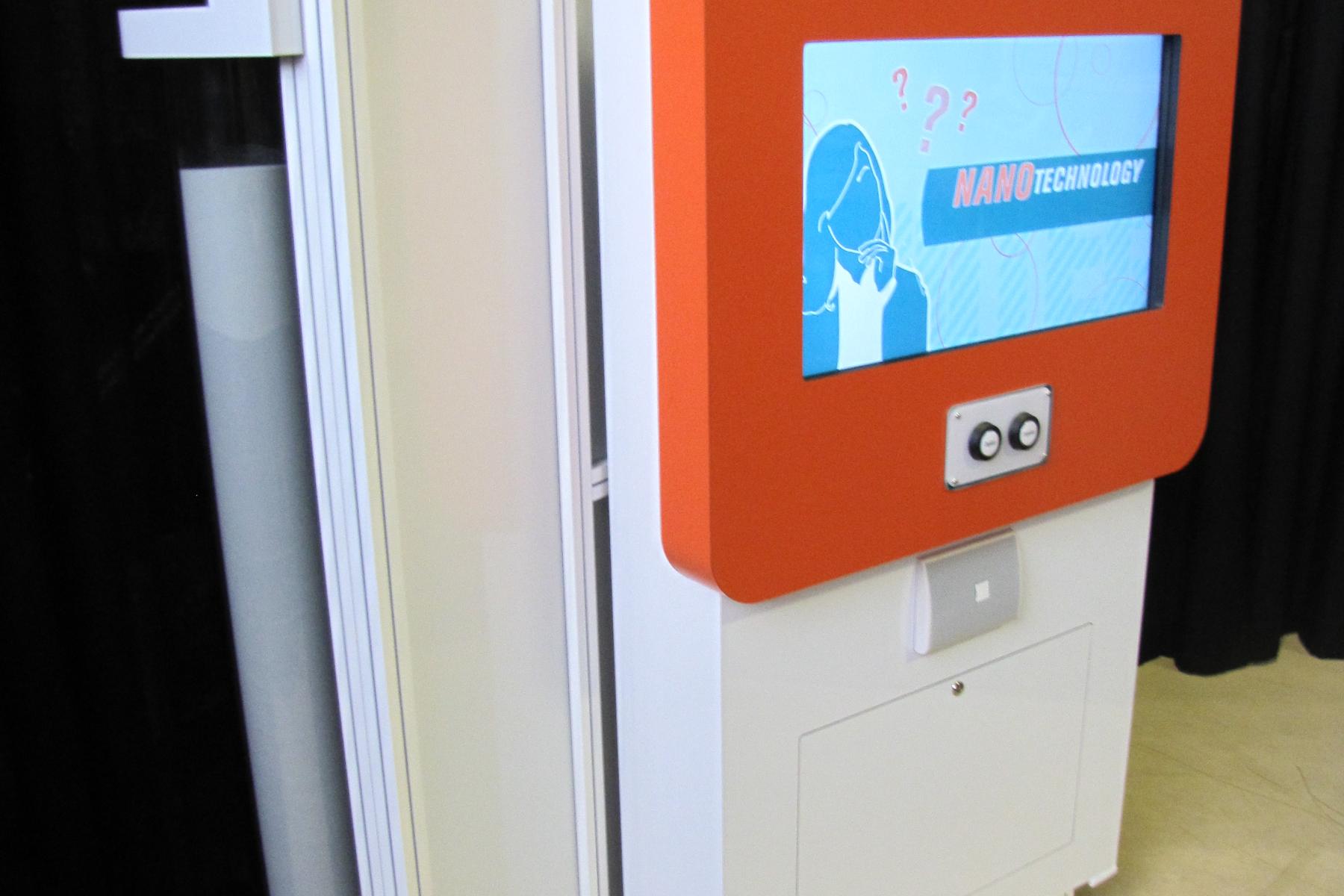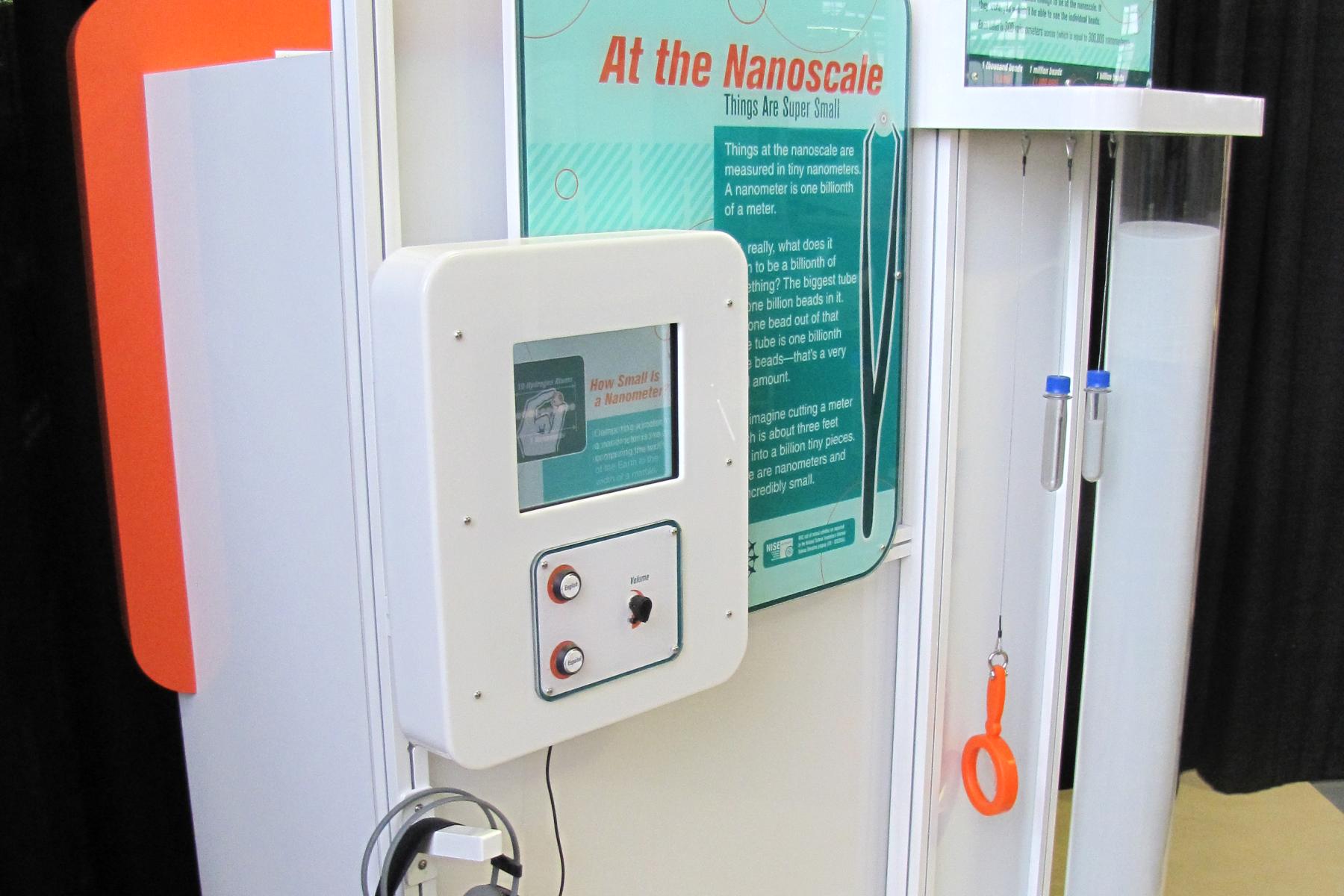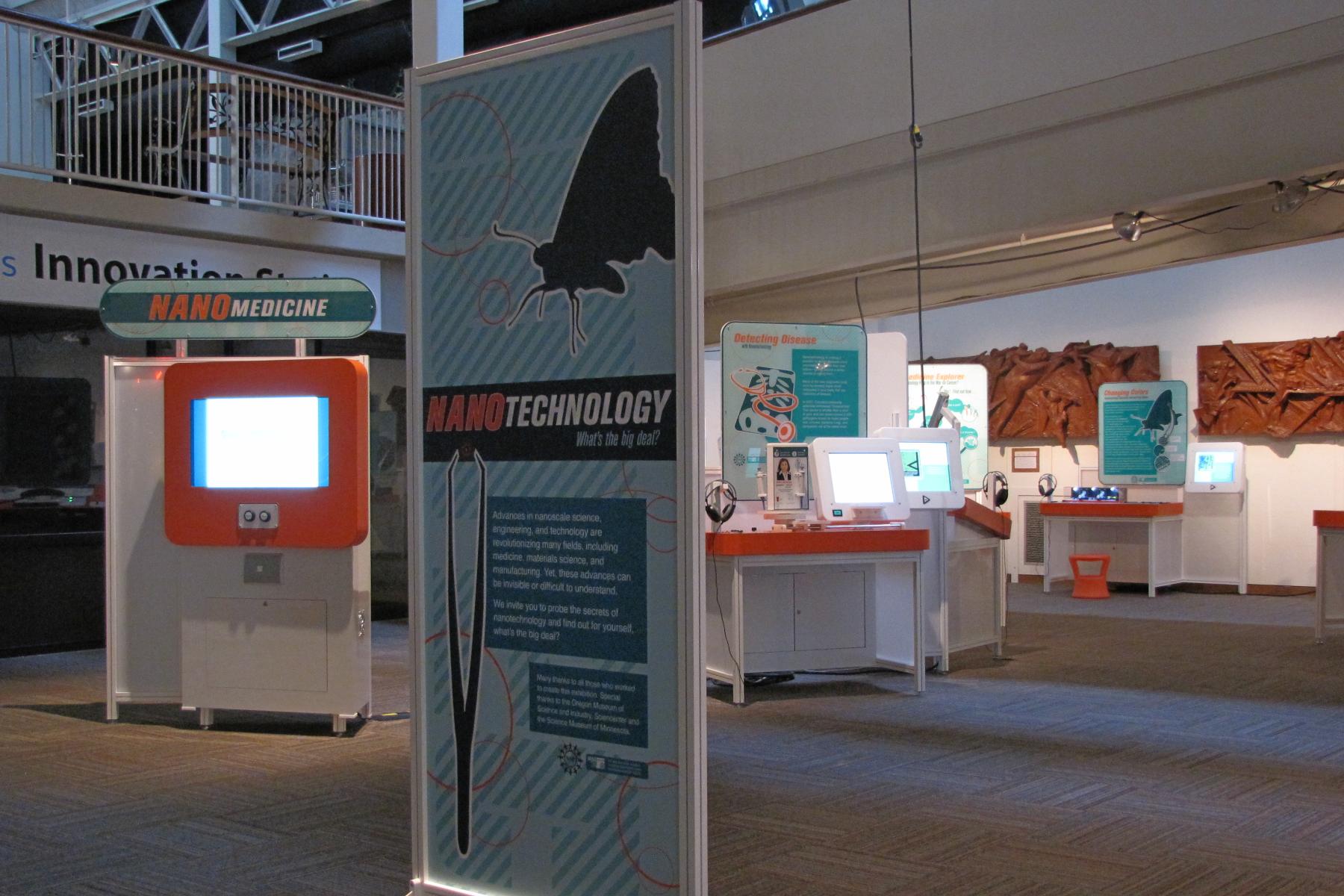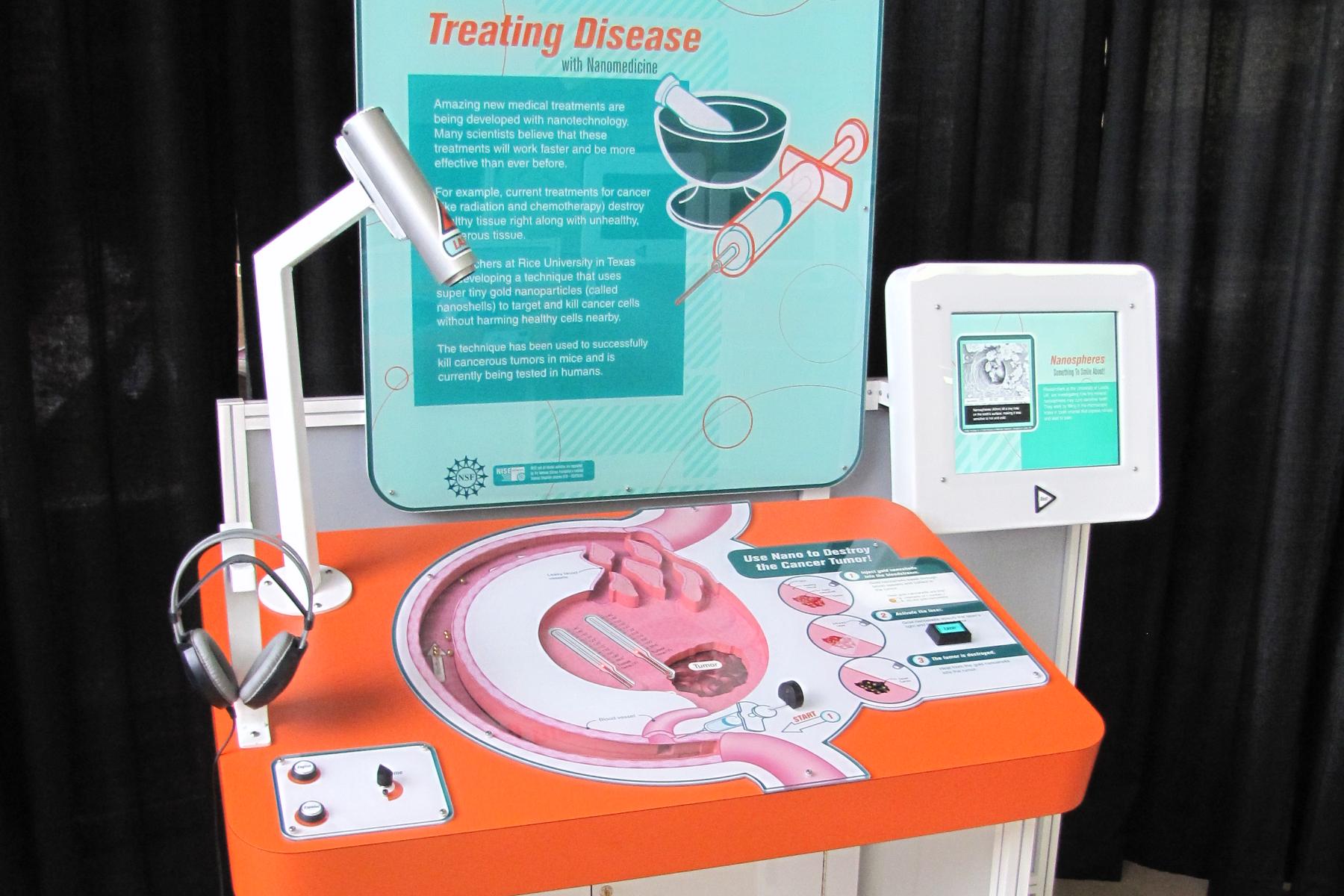DESCRIPTION
The NISE Network created the Nanotechnology: What's the Big Deal? exhibition which has toured the Arkansas Discovery Network beginning in 2010. Copies of many of these exhibits were also previously on display at the Museum of Science, Boston and the Oregon Museum of Science and Industry (OMSI) in Portland, OR.
Please see resources section below for detailed information on each individual exhibit.
Intro to Nanotechnology Exhibits:
NanoMedicine Exhibits
- Intro to Nanomedicine video
- Nanomedicine Explorer
- Treating Disease
- Regenerating Tissues
- Detecting Disease
Stand Alone Exhibits
Younger Audience Exhibits
DESCRIPTION
The NISE Network created the Nanotechnology: What's the Big Deal? exhibition which has toured the Arkansas Discovery Network beginning in 2010. Copies of many of these exhibits were also previously on display at the Museum of Science, Boston and the Oregon Museum of Science and Industry (OMSI) in Portland, OR.
Please see resources section below for detailed information on each individual exhibit.
Intro to Nanotechnology Exhibits:
NanoMedicine Exhibits
- Intro to Nanomedicine video
- Nanomedicine Explorer
- Treating Disease
- Regenerating Tissues
- Detecting Disease
Stand Alone Exhibits
Younger Audience Exhibits
OBJECTIVES
BIG IDEA
Things at the nanoscale are super small and have unexpected properties.
(Please see additional information for each individual exhibit.)
LEARNING GOALS
Things at the nanoscale are super small.
Super small nanoparticles can have very unexpected properties.
Scientists are figuring out how to create and manipulate materials at the nanoscale through self-assembly.
(Please see additional information for each individual exhibit.)
NANO CONTENT MAP
Nanometer-sized things are very small, and often behave differently than larger things do.
Scientists and engineers have formed the interdisciplinary field of nanotechnology by investigating properties and manipulating matter at the nanoscale.
Nanoscience, nanotechnology, and nanoengineering lead to new knowledge and innovations that weren't possible before.
Nanotechnologies—and their costs, utility, risks, and benefits—are closely interconnected with society and with our values.
DOWNLOAD FILES
- Size and value of each exhibit in Nanotechnology What's the Big Deal rev 2010 (PDF)
- Size and value of each exhibit in Nanotechnolog What's the Big Deal rev 2010 (DOC)
- One-page brochure for each exhibit in Nanotechnology What's the Big Deal rev 2010 (PDF)
- Graphic - Logo for Nanotechnology What's the Big Deal (PNG)
- Graphic - Introduction to Nanotechnology Exhibition Intro Panel Graphic (PDF)
- Graphic - NSF Credit sign sticker (PDF)
- Evaluation (Summative) - Exhibits and Programs Year 5 Summative Evaluation (PDF)
- Evaluation (formative) - Nanomedicine Exhibits 2008 Formative Evaluation (PDF)
Credits
Several NISE Network museums collaborated to create this exhibition including Museum of Science, OMSI, Sciencenter, and Science Museum of Minnesota; please see individual exhibits descriptions and technical manuals for more details.
Developed for the NISE Network with funding from the National Science Foundation under Award Numbers 0532536 and 0940143. Any opinions, findings, and conclusions or recommendations expressed in this product are those of the authors and do not necessarily reflect the views of the Foundation.
Creative Commons Attribution Non-Commercial Share Alike 3.0 United States (CC BY-NC-SA 3.0 US).
View more details

NISE Network products are developed through an iterative collaborative process that includes scientific review, peer review, and visitor evaluation in accordance with an inclusive audiences approach. Products are designed to be easily edited and adapted for different audiences under a Creative Commons Attribution Non-Commercial Share Alike license. To learn more, visit our Development Process page.





